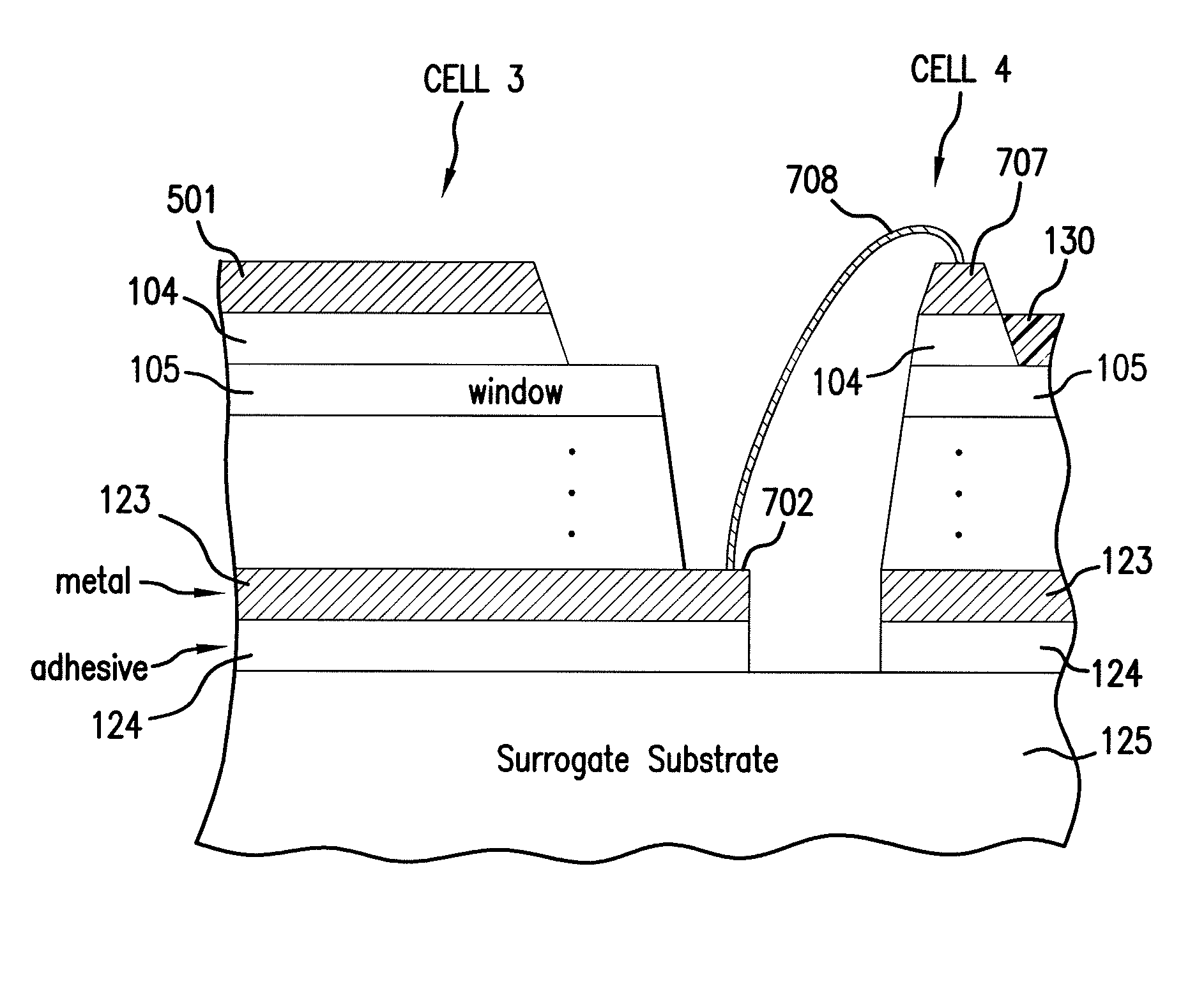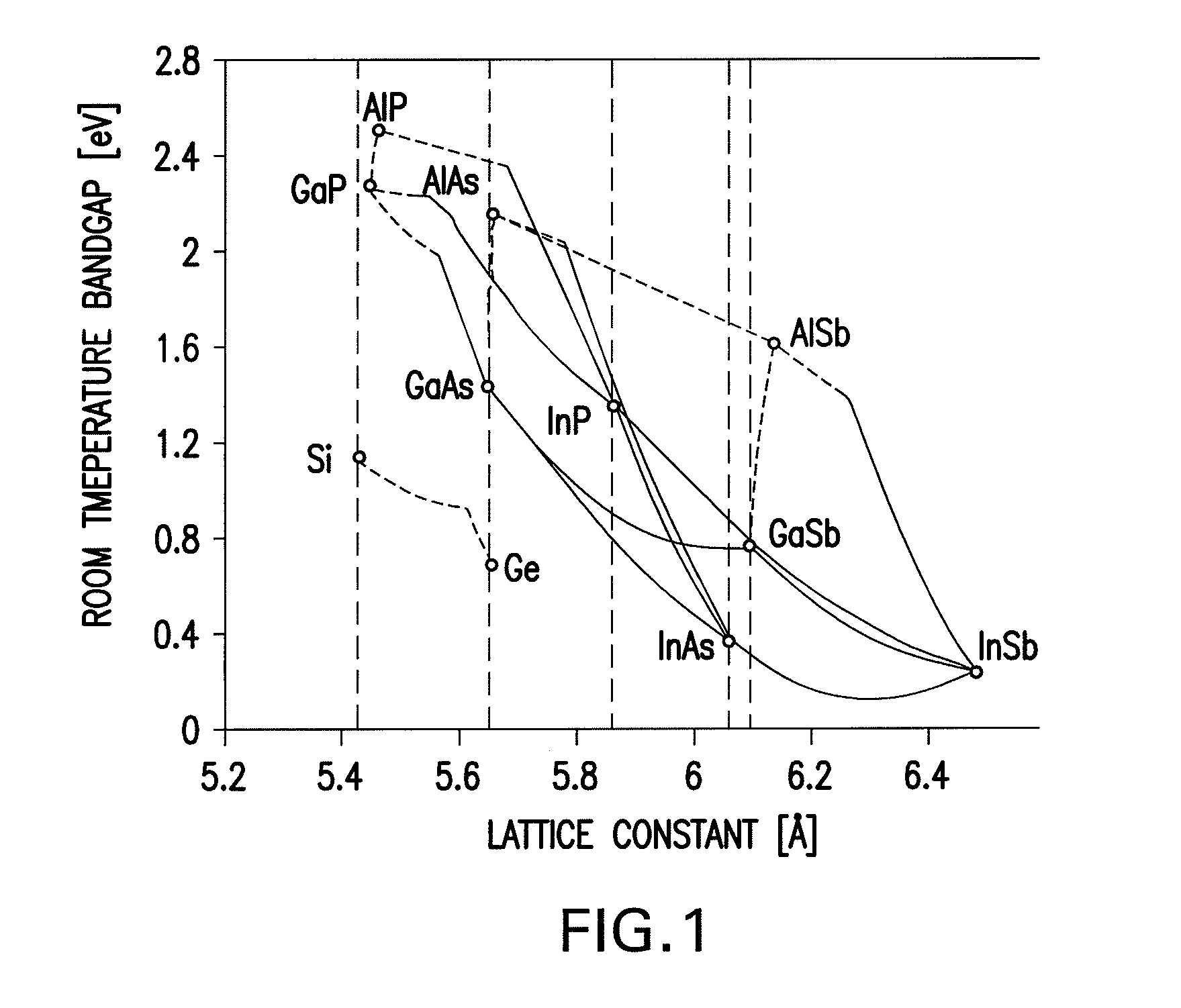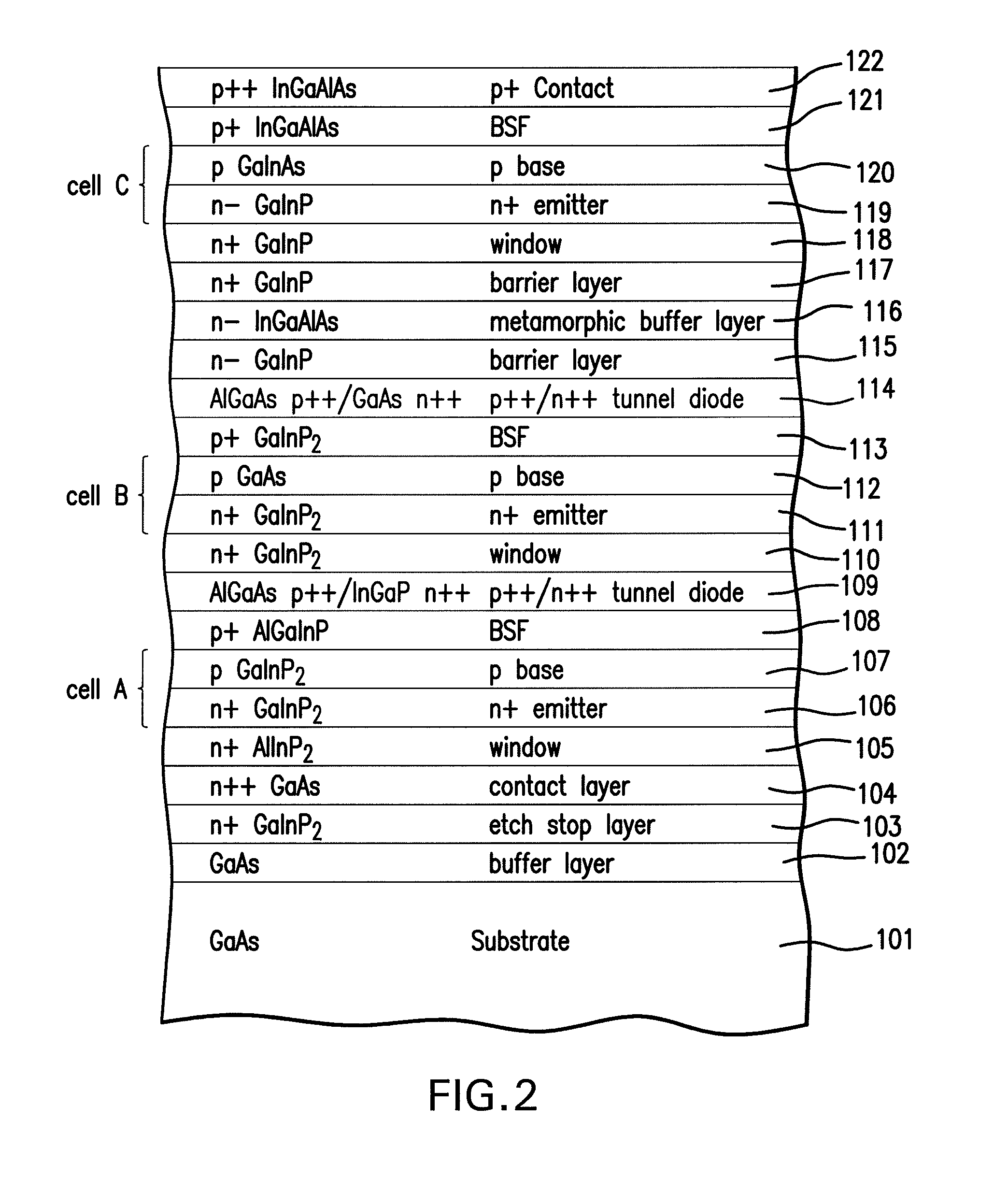Wafer level interconnection of inverted metamorphic multijunction solar cells
a solar cell and metamorphic technology, applied in semiconductor devices, power plants, energy conversion devices, etc., can solve the problems of assembly costs, yield losses, and possibly less than ideal packing density, and achieve the effect of improving the efficiency of solar cells and reducing the cost of assembly
- Summary
- Abstract
- Description
- Claims
- Application Information
AI Technical Summary
Benefits of technology
Problems solved by technology
Method used
Image
Examples
second embodiment
[0080]Although one embodiment of the present invention utilizes a plurality of layers of InGaAlAs for the metamorphic layer 116 for reasons of manufacturability and radiation transparency, other embodiments of the present invention may utilize different material systems to achieve a change in lattice constant from subcell B to subcell C. Thus, the system of Wanlass using compositionally graded InGaP is the present invention. Other embodiments of the present invention may utilize continuously graded, as opposed to step graded, materials. More generally, the graded interlayer may be composed of any of the As, P, N, Sb based III-V compound semiconductors subject to the constraints of having the in-plane lattice parameter greater or equal to that of the second solar cell and less than or equal to that of the third solar cell, and having a band gap energy greater than that of the second solar cell.
[0081]In another embodiment of the present invention, an optional second barrier layer 117 ...
first embodiment
[0103]FIG. 10C is a top plan view of a wafer in which the solar cells are interconnected according to the present invention in which wire bonds are used as the electrical interconnects. More specifically, wire bond 708 electrically connects the bottom contact pad 702 of cell 3 with the front contact pad 707 of cell 4. Similarly wire bond 709 connects bottom contact pad 705 of cell 4 and front contact pad 720 of cell 2, and wire bond 710 connects bottom contact pad 721 with front contact pad 503 of cell 1. The cross-sectional view of this wafer through the B-B plane is shown in FIG. 18.
[0104]FIG. 10D is a top plan view of a wafer in which the solar cells are interconnected according to a second embodiment of the present invention by a thin film metal interconnects.
[0105]More specifically, the Figure depicts the embodiment in which thin film interconnect 722 connects the bottom contact pad 702 of cell 3 with front contact pad 707 of cell 4. Similarly, thin film interconnect 723 connec...
third embodiment
[0113]FIG. 15 is a cross-sectional view of the solar cell of FIG. 14C after the next process step in the present invention in which a cover glass is secured to the top of the cell and the surrogate substrate 125 is entirely removed, leaving only the metal contact layer 123 which forms the backside contact of the solar cell. The surrogate substrate may be reused in subsequent wafer processing operations.
[0114]FIG. 16 is a graph of a doping profile in the emitter and base layers in one or more subcells of the inverted metamorphic multifunction solar cell of the present invention. The various doping profiles within the scope of the present invention, and the advantages of such doping profiles are more particularly described in copending U.S. patent application Ser. No. 11 / 956,069 filed Dec. 13, 2007, herein incorporated by reference. The doping profiles depicted herein are merely illustrative, and other more complex profiles may be utilized as would be apparent to those skilled in the ...
PUM
 Login to View More
Login to View More Abstract
Description
Claims
Application Information
 Login to View More
Login to View More - R&D
- Intellectual Property
- Life Sciences
- Materials
- Tech Scout
- Unparalleled Data Quality
- Higher Quality Content
- 60% Fewer Hallucinations
Browse by: Latest US Patents, China's latest patents, Technical Efficacy Thesaurus, Application Domain, Technology Topic, Popular Technical Reports.
© 2025 PatSnap. All rights reserved.Legal|Privacy policy|Modern Slavery Act Transparency Statement|Sitemap|About US| Contact US: help@patsnap.com



